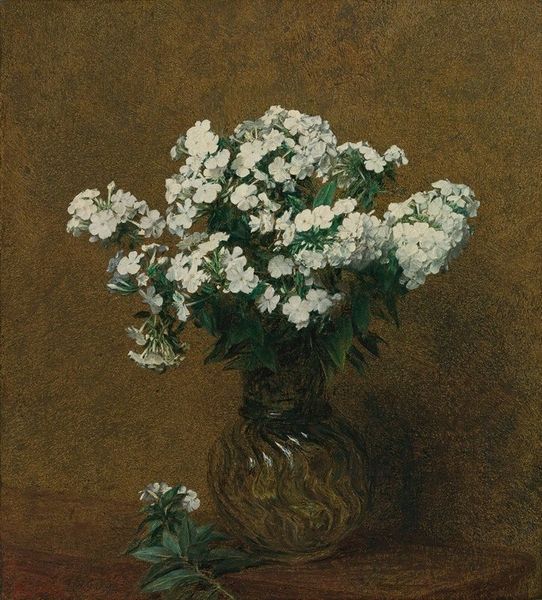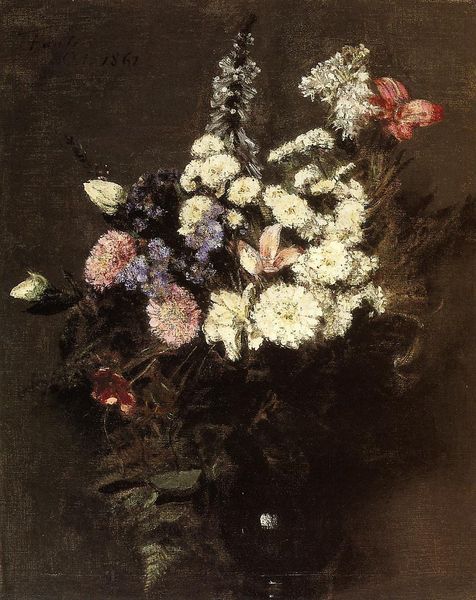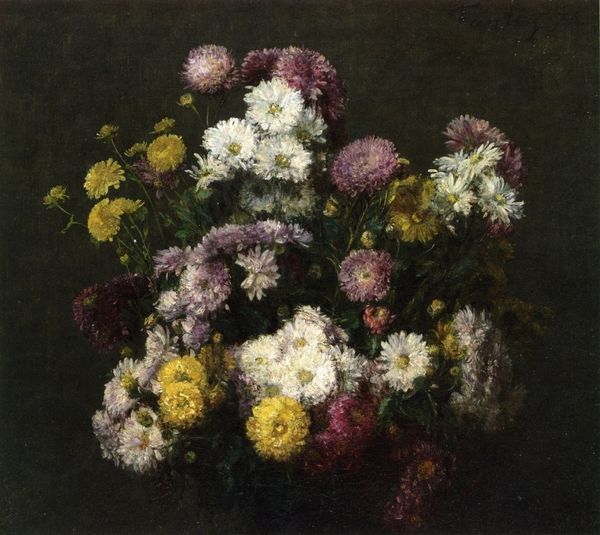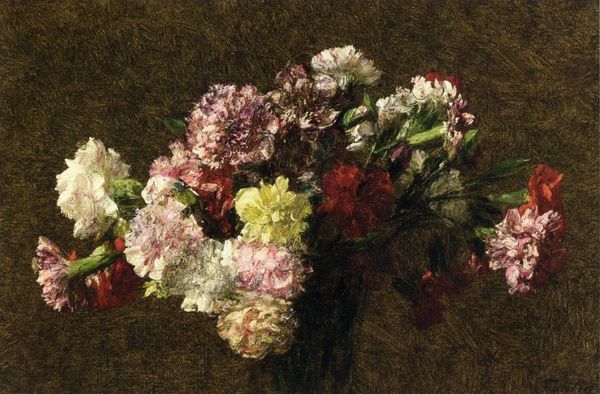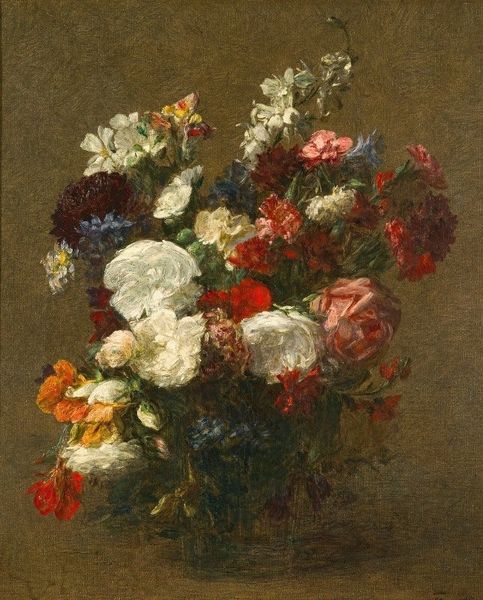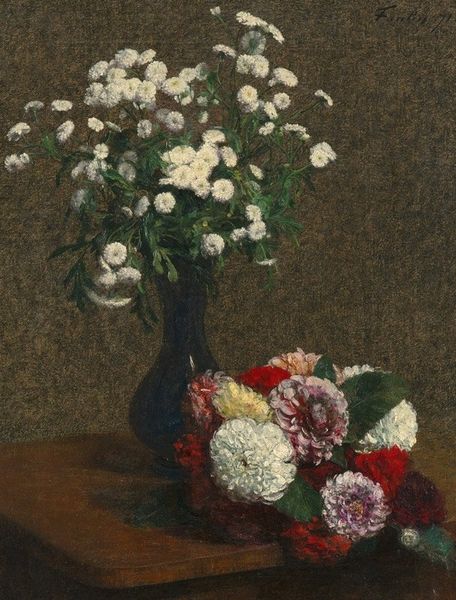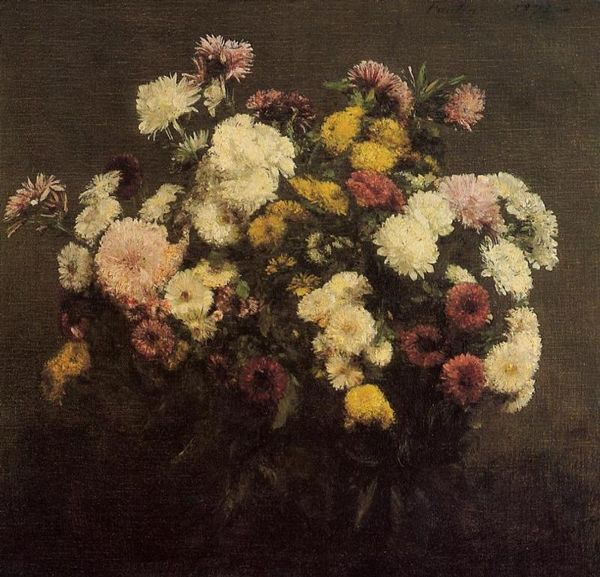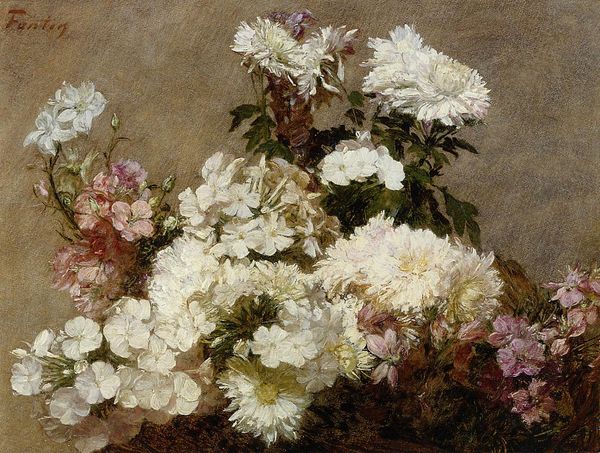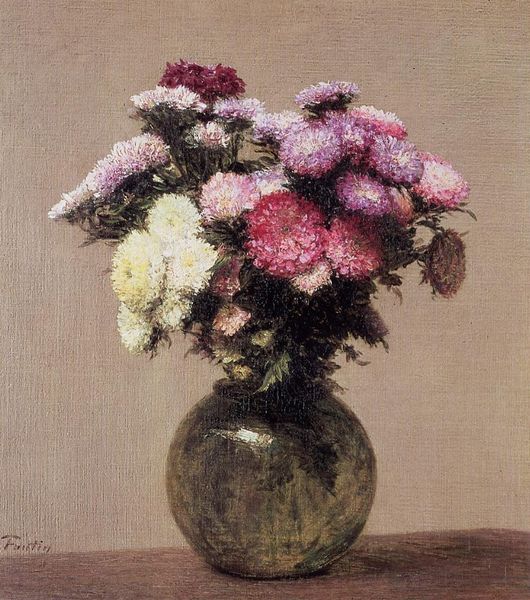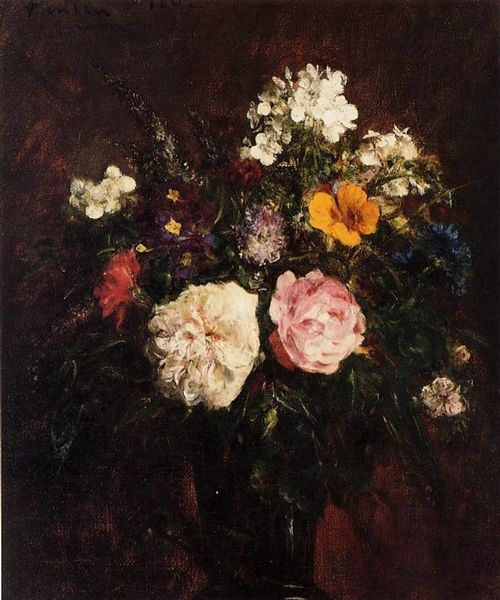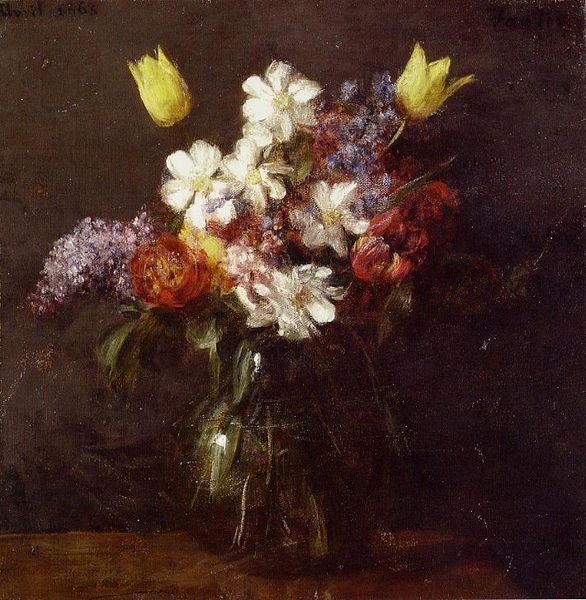
painting, oil-paint
#
painting
#
impressionism
#
oil-paint
#
flower
#
oil painting
#
plant
Copyright: Public domain
Curator: David Johnson’s "Phlox," an oil painting from 1886, presents a vivid cluster of garden flowers against a dark backdrop. What's your initial take? Editor: Dense. It’s incredibly textured—you can almost feel the impasto. It’s also rather somber. Those pinks and whites feel muted, not vibrant. Curator: Johnson, aligned with the late Impressionist movement, seems to capture the flower not just as an object of beauty but perhaps as an emblem of nature’s transience. Editor: But is it about ‘nature’? I see the materiality first, that heavy oil paint built up into those gorgeous dabs to imitate petals. How were his materials sourced, distributed? What workshops and laborers enabled a middle-class artist like Johnson to paint? Curator: Those are important considerations! Still, the piece emerged in an era deeply influenced by horticultural developments, like hybrid flower breeding that made phlox, with its profuse blooms and colors, a desirable garden plant. Editor: True. And the context does give those ‘garden flowers’ social and cultural capital. But the brushstrokes here are just as important. Are they hurried, reflective of quick observation, or do they painstakingly build that floral mountain? The means of production and that final sale must have defined Johnson's world and artistic practice. Curator: Interesting perspective. Thinking about its place in society, consider how depictions of idealized landscapes contributed to both leisure and societal aspirations among the growing middle class. Botanical painting gained immense traction, displayed not just for decoration but for subtly asserting notions of taste and status. Editor: Yes, it definitely fits within a system—but Johnson, armed with paints, brushes, canvas, occupies a space of creative labor worth deeper study. It feels limiting to relegate this image to simple "taste". Curator: I appreciate the grounding reminder to consider materials and the act of creation, and, as a whole, to recognize the layers of social meaning imbedded in something as apparently straightforward as a bunch of phlox. Editor: Likewise; let’s not forget the context shapes materiality; labor shapes form and value.
Comments
No comments
Be the first to comment and join the conversation on the ultimate creative platform.
